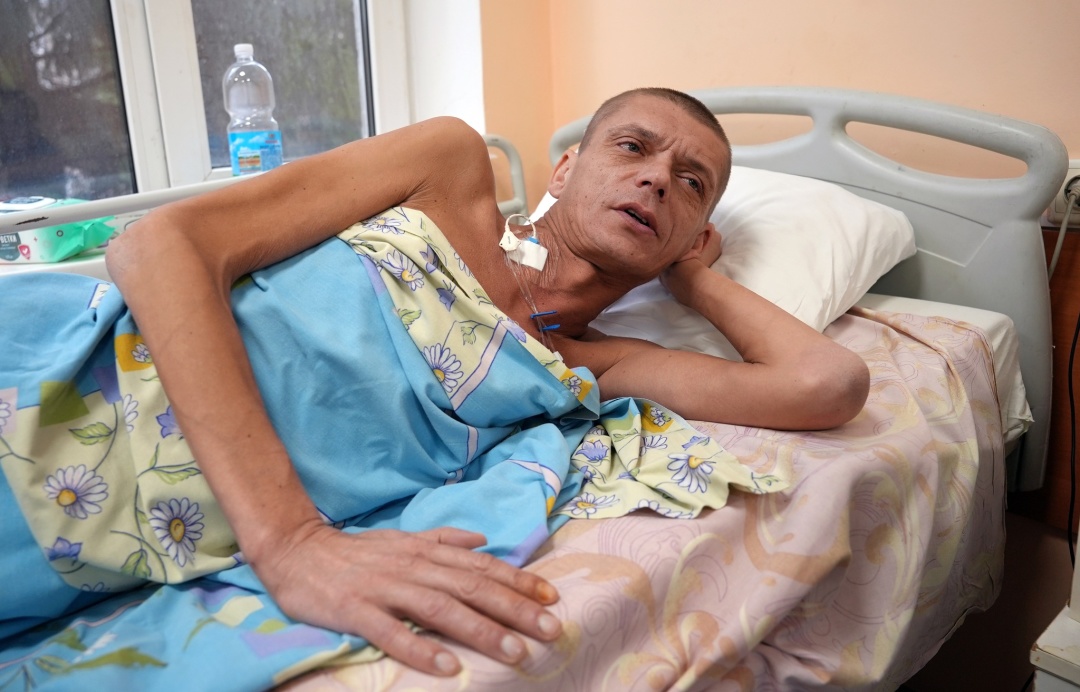A soldier who survived 36 days with a turnstile was operated on in Kharkiv; the man could not be evacuated from Vovchansk due to the activity of Russian drones.
This was reported on Facebook by the press service of the Military Medical Clinical Center of the Northern Region, Ukrinform reports.
“A soldier who survived after 36 days with a turnstile on his wounded leg was operated on in a Kharkiv hospital. Even the most experienced military surgeons do not remember such a figure: 864 hours,” the post reads.
It is noted that for more than a month, 41-year-old Oleksandr could not be evacuated from his positions near Vovchansk. All this time, a tourniquet was tightly wrapped around his right leg (usually they are recommended for no more than two hours).
“The man survived due to the proper management of the tourniquet. If the tourniquet had not been applied or if it had been done incorrectly, the man would have died. I think the training of the military is growing. Gradually, the troops are being filled with people who have undergone basic training and understand what to do when they are wounded. The soldier is alive, but, unfortunately, the part of the limb that was with the turnstile was amputated,” said Vyacheslav Kurinnyi, deputy chief of the medical unit of the Military Medical Clinical Center of the Northern Region.
According to doctors, there are no similar cases described in the literature.
“We have not seen any data on such long-term cases in the literature. And, unfortunately, this is happening now,” Kurinnyi added.

Oleksandr was brought to the Kharkiv hospital in serious condition: with high anemia and intoxication due to heavy blood loss. “We carried out preoperative preparation: restored the volume of circulating blood and increased hemoglobin. He was delivered with hemoglobin 69, which is a very low hemoglobin, and it is not recommended to perform surgery with such hemoglobin. In addition, the patient had hypoalbuminemia, which was due to the fact that he had not eaten or drunk normally for a long time. He said that he did not remember a normal meal. Then we stabilized the patient under anesthesia. And we started surgical intervention,” says Inna Stetsiuk, senior resident of the Department of Anesthesiology, Resuscitation and Intensive Care.
Such complications are the least that could happen to a person after 36 days with a tourniquet on his wounded leg, said Dmytro Sitchenko, the surgeon who operated on the soldier.
“We have never seen anything like this before. Gangrene has already begun, the limb is dying off with purulent complications. That’s why he was intoxicated, dehydrated, anemic, hypoalbuminemic and lost a lot of weight. But he was very lucky,” says Dmytro Sitchenko, senior resident of the purulent surgery department.
Oleksandr from Khmelnytsky was brought to the hospital conscious. He told us about his injury: he stepped on a mine, most likely a “PFM-1 mine”. “I could not evacuate for a month and six days. And then the weather got worse, the drones stopped flying for a while, and they were able to take me out. The guys helped me with the tourniquet, I couldn’t do it myself. I realized from the second day after the injury that I would lose my leg. And I did not dwell on it anymore. I wanted to live, I wanted to go to my family, to my sons. I have two sons. The older one is 12, the younger one is only 2 years old. This is what kept me going,” Oleksandr said in the postoperative ward.
He is going to undergo medical evacuation to the west of the country and prosthetics.
As reported, the 52-year-old soldier with the call sign “Alex” had been in Vovchansk, Kharkiv region, with a tourniquet for 24 days.
The first photo is illustrative
Source: Soldier who survived 36 days with turnstile was operated on in Kharkiv




